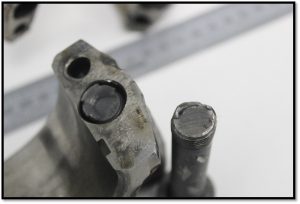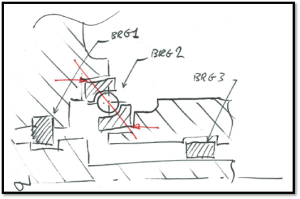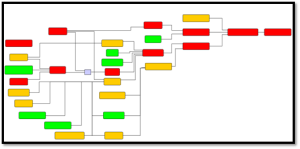The failures that come across our desk range from something as simple as a single bolt to problems with complex systems such as gas turbines or internal combustion engines. While a surprising amount of information can be gleaned in the former case (check out our recent post on problems with bolted joints), it is the big, multi-disciplinary failure investigations that are the most interesting.
A failure in something as complex as a gas turbine can be daunting to approach. Working in industries as diverse as medical, agri-tech, and off-shore renewables, the equipment we are examining may be something we have never encountered before, but with a systematic approach and our talented team of engineers and scientists, we are almost always able to deliver insight into the root cause.

1. Get the right people
Investigation into even a superficially simple system such as a single piece of equipment in a manufacturing line requires input from a range of personnel. Our diverse in-house team covers a lot of bases, but when it will add value, we consult with our extensive network in industry and academia to make sure the right people are involved.
Of course, the most important people to get on-board are the people who design, build, operate and maintain the system in question. Managed badly, a failure investigation can easily turn into a blame game, so these parties may be reluctant to help you out; it is crucial to promote a no-fault approach from the outset of an investigation.
2. Understanding the interaction
Much like a physiotherapist asking you about your knee when your hip is playing up, if a failure occurs in a shaft, our first questions will be about the bearings, housings and the layout of the power-train. At a systems level, the same approach can be adopted: a failure in a pipe support could be caused by an improperly specified valve somewhere else in the system.

3. Develop a fault tree
Harness your inner child and respond to every answer with ‘but why?’ and don’t take ‘because Mummy says so’ as an answer. It takes imagination, experience, and input from the whole team to identify all the different ways a node can fail. This can be distilled into a hierarchical fault tree, tracing from the final failure on one side, back to all the possible root causes on the other. If well-executed, a fault tree is an invaluable tool in diagnosing a failure. Don’t be afraid to revise your fault tree throughout the project; this should be a working document, and it’s rare to capture everything right first time.

4. Substantiate with measurement and analysis
Once you have started to map out different possible routes to failure, you can start to rule some of them out. Ideally, you will be able to find experimental evidence to prove or disprove certain failure modes. For instance, a peak in a frequency spectrum might suggest an issue with a particular piece of rotating equipment that runs at a known speed, or features on a fracture surface might indicate something about the failure.
Sometimes, this isn’t possible; this is when calculations and analysis come into play. Tools like finite element analysis (FEA), computational fluid dynamics (CFD), and pipe stress analysis (PSA), together with hand calculations can be used to demonstrate plausibility (or impossibility) of failure modes. As well as using industry standard tools like ABAQUS and OpenFOAM, we have our own in-house tools for specialist tasks like bolt stress analysis or bearing calculations.

5. Know when to stop
In many failure investigations, you will eventually reach a point in your fault tree where there are multiple possibilities and it’s just not possible to know what happened for certain. To work to time and budget, it is important to recognise what questions can and can’t be answered so you know how best to direct your efforts.
ESR’s failure investigation support
ESR Technology’s National Centre for Tribology employs experts across the engineering disciplines, and has experience in investigating, understanding and remediating failures in a range of industrial sectors. If you have had a failure, get in touch to find out more. If you haven’t had a failure yet and would like to keep it that way, consider talking to our Safety and Risk Management group, who specialise in finding problems before they happen.